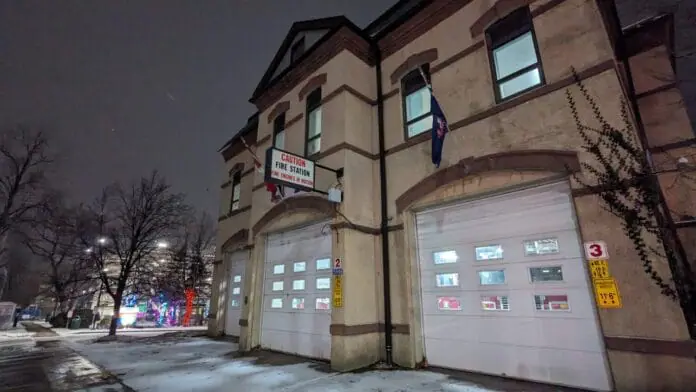The ongoing wildfires in Canada underscore the intersection of environmental racism and ecological disasters.
In recent years, Turtle Island has witnessed a worsening wildfire crisis, sparking heightened concerns about its impact on an increasing number of communities. Over four million people reside close to forests with heightened wildfire risk due to the climate crisis, which has already devastated over 15 million hectares of land. The summer of 2023 was Canada’s worst wildfire season on record, with 6,118 wildfires burning and nearly 200,000 folx placed under an evacuation order.
It is critical to emphasize the significance of isolated rural communities within Canada’s Coastal Treeline and Boreal Forest regions, which have felt the impact of evacuation orders and displacement more than those in urban areas. These regions are frequently home to the Indigenous, Metis and Inuit populations of Turtle Island.
What is environmental racism?
Environmental racism stems directly from Canada’s historical and continued colonization, affecting communities from coast to coast. Coined by Benjamin Chavis, a Black civil rights leader, the term “environmental racism” denotes racial discrimination within environmental policies. This systemic discrimination perpetuates social and economic disparities, disproportionately burdening marginalized groups with the impact of ecological crisis.
Indigenous groups across Turtle Island bear a significant brunt of this impact despite their minimal contribution to its creation. Wildfires disproportionately displace and harm Indigenous communities, who are 30 per cent more susceptible to the unintended consequences of these ecological disasters. These communities face additional hardship as flames threaten their lands, homes, cultural heritage and practices, one of which has long assisted in environmental stewardship.
British Columbia was the first in Canada to ban cultural burning
British Columbia was the first province to prohibit cultural burns, which are essential for our ecosystem’s well-being. Indigenous cultural burning helps to activate the landscape by burning off dead grass, encouraging new growth and protecting healthy vegetation; in doing so, it helps to stop the spread of wildfires.
Canadian Geographic writers Johannah Brockie and Soomin Han wrote: “Indigenous peoples have long been and continue to be stewards of the land and waters, employing sustainable practices, nurturing a deep connection to nature, and holding solutions to the climate crisis.” Indigenous Peoples have a long history of purposefully and carefully using fire for cultural and land management purposes.
But colonial policies and laws have banned burning, creating a void of Indigenous fire knowledge and diminishing Indigenous People’s land rights. As such, the province of British Columbia implemented the Bush Fire Act of 1874; other provinces followed in the early 1900s. The burning ban aimed to remove ceremonies and assimilate Indigenous peoples into Western European worldviews.
Cultural burns differ from planned, controlled burns, called “prescribed fires,” executed by government forest managers. Prescribed fires are primarily done to eliminate built-up “fuel” (sticks, fallen branches, grass) and reduce the risk of uncontrolled wildfires. On the other hand, cultural burns reduce the risk of wildfires and promote the growth of medicinal and food plants, such as mushrooms, berries and wild onions, all while maintaining the landscape for all species. In essence, while prescribed fires aim to minimize risks by eliminating accumulated fuels, cultural burns mitigate wildfire risks and foster a deeper connection with the land and resources.
Are wildfires a new normal?
Wildfires are a natural process in Canada’s forests and benefit ecosystems at a certain level. However, climate change creates more destructive wildfires because of hotter temperatures and drier vegetation. As the impacts of climate change intensify and historical laws against intentionally setting fires on land persist, a fundamental shift in our perception of fire emerged. This begs whether humanity can slow the devastation of uncontrolled wildfire and, if so, how it can be done.
We must center our gaze on our Indigenous kin
Canada spends one billion of its public dollars on suppressing wildfires each year. Relatively little of this money is invested in wildfire risk reduction practices, such as Indigenous fire stewardship and the purposeful application of fire to the landscape (i.e., cultural burning).
Discourse about the effects of climate change has created anxiety about burning; however, we must reframe our perspectives and consider reintroducing cultural burning practices. Public money being spent should be invested in Indigenous community initiatives, such as the Revitalizing Traditional Burning program.
The need for justice in legislation
Canada’s climate change adaptation policies often overlook a crucial reality: climate change impacts are inequitable, meaning most risks are created by society, not nature.
Western ways of doing and knowing must be shifted toward a cycle of connection, to position ourselves equally with other living things. As such, the Canadian Environmental Protection Act (CEPA) must be modernized to reflect such thinking, and Indigenous cultural practices banned by the Bush Fire Act of 1874 must be legalized.
Advancing climate action and justice should not solely reside in the macro sphere. Considerable advocacy efforts have emerged through school clubs and social media, signalling the importance of grassroots engagement.
To mitigate the devastating impact of wildfires, there’s a vital need to reconsider current fire management practices, reinstate Indigenous cultural burning and foster a deeper connection with nature.


Recent Comments